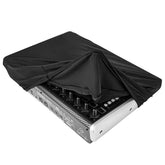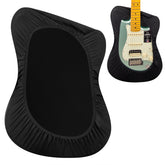Guidelines for Self-Learning Guitar: Techniques, Tutorials, and Finger Care
by
linzz
23 Jan 2024
If you want to self-learn, bring out perseverance, which is the first step. I don't know if you are interested in learning classical guitar or folk guitar. Here are some summarized tutorials for your reference.
How to Learn Guitar: Part One - Choose a Good Tutorial
A good tutorial is like having a good teacher, especially for instruments like the guitar that are highly suitable for self-learning. While having a real teacher is ideal, it might be too expensive or not feasible for many. Therefore, a good tutorial becomes crucial. I recommend using the book "Classic Tutorial of Folk Guitar" compiled by Zhang Wenzhong, along with 8 accompanying VCDs. This tutorial is one of the best I've come across, suitable for absolute beginners. The video explanations progress gradually, covering all aspects of guitar learning systematically. After diligent study, your skills can reach a considerable level, enabling you to play more complex pieces. Highly recommended! The only drawback is that the songs in it are relatively old, but once you master the techniques, you can play any song. There are plenty of online reviews for this tutorial, so you can search for more opinions.
Of course, what's discussed here is solely the playing techniques of the guitar. As for chord progression, musical expression, etc., it entirely depends on your level of music theory knowledge.

How to Learn Guitar: Part Two - To Have or Not to Have a Teacher
If you can find a skilled teacher, that's undoubtedly the best option. Having a friend who is a "pioneer" in this area is also acceptable. Their skill level doesn't need to be extremely high, but the basic hand shapes and finger positioning must be correct. Because the fundamental movements during the beginner stage are crucial, laying a solid foundation here will prevent deviations in the future.
A piece of advice: Never join guitar training classes in society! With dozens of people crowded together, a teacher might struggle to give individual attention. Even if the teacher is highly skilled, the effectiveness of learning is questionable. Most teachers offering such classes are well aware that the only purpose is to make money quickly and efficiently. It's better to spend a bit more, have a teacher instruct you individually, or learn with a small group of three to five people to truly benefit from a good teacher.
Besides formal technical requirements, the most important aspect of learning the guitar is the atmosphere. If you can find a few like-minded friends to practice together, it will maintain enthusiasm and make it easier to persist. Remember the passionate moments of practicing together in the dormitory bathroom during college – that was the time of rapid progress.

How to Learn Guitar: Part Three - Schedule Practice Time Wisely
For an amateur enthusiast, time management is a challenging yet crucial issue. Poorly arranged time can lead to inefficient efforts.
We understand that mastering playing techniques fundamentally involves controlling muscles through neural mechanisms, formed through continuous practice. This requires a long-term accumulation. If practice time doesn't meet the requirements, the transformation from quantity to quality won't happen.
The practice time mentioned here includes two aspects: the duration of each practice session and the frequency of practice, i.e., the time interval between this practice and the next.
The following schedule is for reference:
1. For beginners, since there isn't much to practice initially, an hour per session is generally sufficient. Practice daily, and if time is really tight, at least practice every other day, no less.
2. For the transition from beginner to intermediate and advanced stages, since there are many techniques to practice, each session must last for at least two hours, the longer, the better. Of course, take a break of 5 to 10 minutes as needed in between. Practice every day, even if busy, try to find time, aiming to reach a new level within a specific time frame.
3. After reaching a considerable level, there are no strict time requirements. Generally, two to three practice sessions per week, each lasting half an hour or more, should be sufficient. However, for classical guitarists, if you want to master a specific difficult technique, such as "fingerpicking," during a certain period, increase practice time and frequency, as in point 2.
Additionally, it's best to set a fixed practice time every day to establish a routine.

How to Learn Guitar: Part Four - Protect Your Fingers
Fingers are the most precious asset for a guitarist. Take care of your fingers, don't let them get hurt.
Points to note:
1. If your fingertip is accidentally cut, go to the hospital for proper disinfection to ensure it doesn't get infected and leaves no scars!
2. Beginners often feel pain in their fingers, especially the fingertips of the left hand, or even blisters. This is somewhat unavoidable. Generally, the pain will disappear in about a week. To avoid blisters, stop immediately when you feel slight pain during practice, resume the next day. However, if blisters do appear, don't panic. Just stop practicing with that finger, and resume when the blister is gone. Typically, once you've had a blister, it won't happen again unless you're too lazy and haven't practiced for several months – then...
3. Control the amount of finger movement. Don't practice excessively, especially advanced techniques prematurely; otherwise, your fingers may easily get injured. A standard is: if you feel soreness in the finger joints, stop practicing immediately and resume when recovered.







